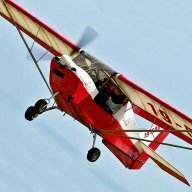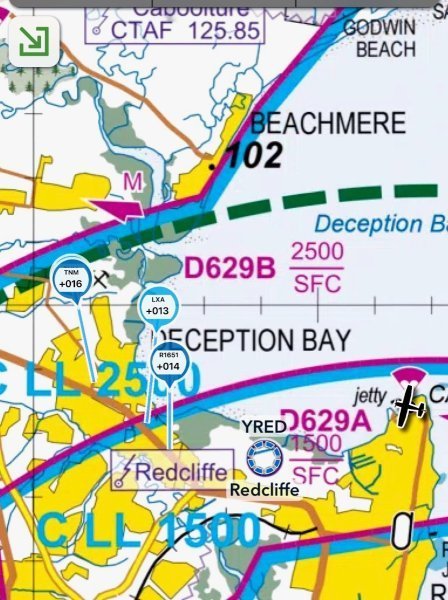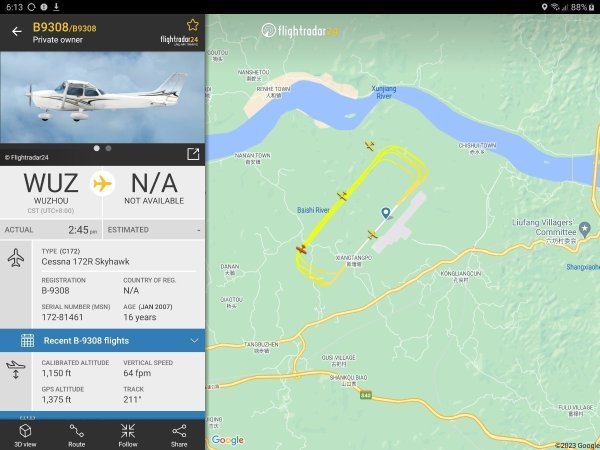-
Posts
2,780 -
Joined
-
Last visited
-
Days Won
60
Content Type
Profiles
Forums
Gallery
Downloads
Blogs
Events
Store
Aircraft
Resources
Tutorials
Articles
Classifieds
Movies
Books
Community Map
Quizzes
Everything posted by Garfly
-
This bloke asks the same question ... and adds some speculation about the 'story' that doesn't add up.
-

New Aussie Turboprop engine (200 HP) introduced at Sun 'n Fun
Garfly replied to Garfly's topic in AUS/NZ General Discussion
An update by Bertorelli: -

Nuts, bolts and washers. Help please.
Garfly replied to flying dog's topic in AUS/NZ General Discussion
A Nordlock promo video: -
A bit more about it here from 05.30 to about 06.30 https://www.youtube.com/watch?v=QQuaC79JjxE&t=16s
-

Two helicopters collide on the Gold Coast 02/01/23
Garfly replied to red750's topic in Aircraft Incidents and Accidents
Yes, it can be a really tricky situation needing a lot of judgement and experience to manage safely. And if your ab initio training happens to have been at either a controlled airport - where you are told exactly what to do - or at a very quiet strip - where you might never have needed to negotiate sequencing with anyone, you'd be very unprepared when arriving at a busy uncontrolled regional port. Especially one where RPT traffic's involved. Throw in multiple runways and the game of checkers turns to chess. So maybe complex uncontrolled circuit work should be a specific subject on the syllabus. Although good places to train are not always easily available. Failing that, I've sometimes thought that a cricket pitch might make a fine classroom for some cheap basic training ; a bunch of fellow students walking the 'circuit' (at various speeds) yelling out their locations and intentions. Maybe an arm in the air indicating 500' above and knuckle dragging, 500' below. (Of course, all done at the risk of being bundled off by the constabulary to a safe place somewhere ;- ) -

Jumbo Stay Hostel Stockholm SwedenAt Stockholm
Garfly replied to red750's topic in UK/Europe General Discussion
Or (a bit) closer to home you can stay in a DC3 - and have it all to yourself (at The Lily, Stirling Ranges (near Albany) WA.) https://www.thelily.com.au/accommodation CLICK FOR FULL SIZE: -

Two helicopters collide on the Gold Coast 02/01/23
Garfly replied to red750's topic in Aircraft Incidents and Accidents
I believe what Turbs found hilarious was my suggestion in a post (on p.4) that this level of (uncontrolled) terminal congestion could be worrisome. Which I posted in response to Thruster88's comment (on p.3): "Imagine you are inbound to this airport. How many radio calls would it take to get situational awareness versus what can be seen in a few seconds on a screen. The future is here, we just all have to get on board. " -

Two helicopters collide on the Gold Coast 02/01/23
Garfly replied to red750's topic in Aircraft Incidents and Accidents
That's heroic. But we're discussing here the case of just two professional PICs, each more than 'up to the task', colliding mid-air in G-space, due insufficient awareness of each other (at the Gold Coast, as at Mangalore and Ketchikan, Alaska) and the conclusions of safety boards that readily available tech should alleviate the danger. That was the point. Not trying to be funny. -
The NTSB final report is now out: Report_CEN21FA215_103073_4_2_2023 3_13_06 AM.pdf https://www.avweb.com/aviation-news/ntsb-says-midair-pilot-overshot-pattern-turns/?MailingID=1293 NTSB Says Midair Pilot Overshot Pattern Turns By Russ Niles Published:April 1, 2023 "The NTSB has cited airmanship and an air traffic control failure in the midair collision of a Cirrus SR22 and a Key Lime Air Swearingen SA226TC at Centennial Airport in Englewood, Colorado on May 12, 2021. The board found that the Cirrus pilot was going at least 50 knots over the recommended speed as he prepared to land. As a result, he overshot his turns from downwind-to-base-to-final by so much he ended up crossing the extended centerline of the adjacent parallel runway. That’s exactly where the Swearingen happened to be and the Cirrus sliced through the twin’s fuselage. The Cirrus pilot activated the Cirrus Airframe Parachute System (CAPS) and settled about three miles from the airport while the cargo plane, missing a big chunk of its fuselage, landed “uneventfully” according to the report. There were no injuries."
-

Two helicopters collide on the Gold Coast 02/01/23
Garfly replied to red750's topic in Aircraft Incidents and Accidents
Yet you can spread tonnes of Super all day long up and down countless acres and not for a second take your mind off the job. Go figure! ;- ) -

Two helicopters collide on the Gold Coast 02/01/23
Garfly replied to red750's topic in Aircraft Incidents and Accidents
Yes, I reckon that'd be the case, SP but in that post I was referring to an Archerfield near-miss story in the latest Flight Safety Australia mag: https://www.flightsafetyaustralia.com/2023/03/too-close-for-comfort/ -

Was this really a 'chute worthy' emergency?
Garfly replied to danny_galaga's topic in Aircraft Incidents and Accidents
That's quite an interesting case. Yeah, there'd be a lot of (competing) thoughts running through any such pilot's head - whether to pull or not, the big red handle. But destruction of the plane ain't likely to be one of them. Even sans insurance. Anyway, there's no guarantee that wheels running on paddock or backroad would do less damage. Cirrus have their reasons for urging the big pull when in doubt. For myself, the question of whether that nicely installed - but untested - BRS in the Skyranger will actually work if called upon, does prey on my mind, a bit. Which is why one reason for hitting the silk early would be in case it doesn't work; there still might be time to set up for a conventional forced arrival. (Which is how it turned out in this case above.) Another, issue would be: do I really want to end up hanging from my straps - after an otherwise okay forced landing - with a powerful explosive right by my head, now on a half-pulled, hair-trigger? For that reason (all else being deemed equal) it may be better to eliminate that danger - to self, pax and first responders - by giving the rocket it's head, aloft, and returning to earth hands free and happy. On the other hand, if the landing did appear pretty straightforward on a nice piece of flat earth then it'd be real tempting to avoid becoming famous on the evening news and the "Aircraft Incidents and Accidents" forum. In any case, I doubt that a serious consideration would be whether or not my chosen way would be deemed 'chute-worthy' by a jury of my (remote) peers. ;- ) -

Australian Aviation safety Digest - online 1953 > 1991
Garfly replied to RFguy's topic in Trips/Events/Seats
-

Bankstown accident 17/03/2023
Garfly replied to flying dog's topic in Aircraft Incidents and Accidents
Without one, the choice is easy. With one, it can get complicated. -
Flying Harry of Iceland rides his Nynja to a Fly-in at BIEG (Egilsstaður) over on the east coast. And takes part in a local Skyranger family reunion ;- )
-
This got me to wondering what the industry standards were in that regard. I found these tidbits interesting: https://www.ifr-magazine.com/training-sims/flight-traffic-displays/ "TCAS is the touchstone that all systems reference. It interrogates surrounding transponders much like ATC secondary surveillance radar. The system must have a 14-mile range, but most extend to 40." So the range of our SE2s is not so shabby, after all; at least in their primary (air-to-air) role and at our relatively leisurely closure rates. Regarding Traffic Advisory standards: "Proximate traffic is within six miles and 1200 feet, but not a threat. TAs and RAs are based on a closest point of approach (CPA) based on time. (Provisions exist for slow closure rates.) An aircraft with a CPA of 20-48 seconds sets off a TA, with higher altitudes yielding the longer times. A target with a 15-35 second CPA sets off an RA in TCAS II." And regarding CDTI (Cockpit Displays of Traffic Information) standards when TCAS info is combined with that of ADSB et al: "TCAS, TAS, and TCAD follow the same display scheme. TIS adds a vector showing an aircraft’s ground track in 45 degree increments. ADS-B mixes things up. Traffic display standards for ADS-B traffic relay directional information by using an arrowhead symbol in either white or cyan. An altitude climbing or descending arrow, a directional vector line extending from the point of the arrowhead, and call sign are also shown for ADS-B Out traffic. Non-ADS-B craft show as “Pacman” symbols with altitude and climbing/descending arrows provided by TIS-B. Ground traffic displays as brown/tan. Ground vehicles are also brown/tan as a top-view rectangle with “wheels” that take some imagination to see. Combining TCAS or TAS with ADS-B modifies the display of traffic. Non-ADS-B Out traffic will be depicted using standard TCAS symbology. Display of traffic with ADS-B Out will show new symbols combining the arrow head into either an amber circle for a TA and red square for an RA."
-
Yes, something to be aware of: OUT is universal but IN isn't, in commercial/ IFR aviation. I'd still like to know how many RPTs - jets and turboprops - that venture down among the G weeds, have ADSB-IN traffic displays. I can't understand why they wouldn't. Yes ... but also 'carry personal "IN" devices for situational awareness'.
-
Yeah, well I guess we'll figure it out as we go along. It'd be great if CASA did some comprehensive field trials of EC gear and published the data. But I don't see it happening soon. In the meantime, little experiments like the one done by kgw (above) can help us calibrate our expectations regarding the INs and OUTs of the SE2. Actually the IN part we can figure out for ourselves. That evidence is right before our eyes.
-
I'm keen to know, for instance, at about what distance an RPT (or other IFR flight) might pick me up on their fish-finder, If we discover that we're converging somewhere in Class G space. If we each have a map view of the other's relative position it makes our radio back and forth a lot quicker and more effective. I also found it interesting that Glen reckons we're likely to have at least 20nm 'visibility' to an AirServices base station. It helps to know that if you're in some kind of emergency situation knowing that Area can see you; it would free you up to take care of aviating. Also handy to know even if you're just planning the safest route around tiger country (and trying to remain conspicuous). I have found that even the audible alerts offered by the AvTraffic app gives you plenty of time to identify and avoid a threat. Typically, it seems to be a good 30 secs or more. (Although when used as a stand alone app it is subject to cell system delays, of course.) Don't know about others. Yes, if one or the other aircraft has the other on their "radar" - and they're talking - it should be okay. But just knowing what to reasonably expect from this fairly new, low-cost tech seems pretty desirable to me. Not only about 'range' but anything and everything else about it; another tool in the safety kit bag.
-
Glen, so would you expect proper TSO'd ADSB-IN / CDTI gear to 'pull in' your average EC target over greater distances than, say, another EC/EFB device would?
-
That's a handy number, since many of us fly with a 10nm ring of confidence on our EFBs anyway.
-
Yes, good point. Just because we 'see' targets 40miles away, doesn't mean we're 'seen' at that distance. Not that we'd need to be, by other traffic. To be seen at a distance by ATC, though, might be useful (or not ;- ). The low-power of the SE2, then, amounts to a self-filtering mechanism, preventing us, the aerial hoi-polloi, from cluttering traffic displays over vast areas. (≈5000 sq. miles given a 40mile range).
-
Yes, that article saying that "it is expected that with a new ATC system on the way, SkyEcho2 transmissions will be displayed to controllers, for situational awareness only, using distinctive symbology" suggests that it's just a software tweak (if anything at all) that was needed to allow EC 1090 transmissions to display. Anyway, I guess it means that Area controllers, too, for the most part, are able to see us now - given line of sight and <40NM. There are quite a few RAAus aircraft that operate out of Canberra - including a certain CT with the moniker 0000 (which they used to call "double zero, double zero" but now [by special arrangement?] goes by "Charlie Tango, double zero"). The rest are addressed by numbers alone - minus the generic "Romeo". E.g: "eighty seven, fifty-five". Of course, these aircraft, would be using proper Mode S transponders, since no EC thingy is kosher in Class C). Yes, for sure, or as the Feds put it "The prime objective of SkyEcho2 is air-to-air traffic awareness"
-
Thanks for doing that experiment kgw. This is good to know. The authorities seem a bit quiet as to the when and where of ATC's 'awareness' of EC devices. I wonder if it's already happened, right across the country. The next question is, what percentage of commercial/IFR aircraft are already equipped with ADSB-IN of some kind? For example, are most (all?) RPT flights, able to see EC devices on their CDTIs - as we see them, on our ADSB/EFBs? (TCAS, I understand, still doesn't cut it for that purpose.) At any rate, here's the official advice from a couple of years back: VFR and visible _ Flight Safety Australia.pdf Can ATC ‘see’ my SkyEcho2? The prime objective of SkyEcho2 is air-to-air traffic awareness – the device is not certified to the performance standards needed for ATC separation services. Nevertheless, CASA envisages the device being used for situational awareness by ATC. By early this year, the Airservices Australia ATC system had not been modified to display SkyEcho2; however, it is expected that with a new ATC system on the way, SkyEcho2 transmissions will be displayed to controllers, for situational awareness only, using distinctive symbology which will prevent the application of surveillance separation standards to those aircraft. Given the COVID crisis, there is uncertainty about when this capability may be delivered by Airservices Australia.
-

Two helicopters collide on the Gold Coast 02/01/23
Garfly replied to red750's topic in Aircraft Incidents and Accidents
Yeah, but I gather it was an issue of being on the wrong frequency at the wrong time. "When I look back on the incident, I wonder what more I could, or should, have done to prevent it from even happening. Lessons learnt: Perhaps if I had listened out on the Brisbane Centre frequency as well as the Archerfield Tower frequency during our direct track to Park Ridge, we may have been alerted to the presence of the twin. As it turned out, the only things that saved us from a mid-air collision on that day were pure luck and a sliver of time"













